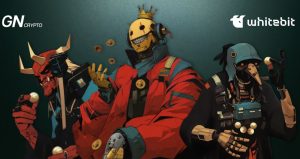History of the LUNA disaster

The crypto industry may have met with a new “black swan”: one of the most capitalized projects in the world, Terra, which was in the TOP 10 of the CoinMarketCap rating a few days ago, lost almost everything of its assets.
On this page
First of all, we are talking, of course, about the native token LUNA and the algorithmic stablecoin Terra USD (UST). The first fell hundreds of times in a few days, from $80 to $0.0003. The second completely lost its dollar peg, depriving it of its entire existence and leading to cascading liquidations and irreversible processes throughout the ecosystem.
The price of UST fell to 20 cents, which can justly be called a collapse for a “stablecoin,” the main task of which is to maintain a constant value of around $1.
For some time, big exchanges suspended trading in LUNA futures contracts. Some platforms canceled the results of all transactions in pairs with LUNA and UST that were opened during the crisis period and even warned of possible complete delisting.
What happened?
It must be said that this whole story can be interesting to consider from three different points of view at once.
All these points are worthy of separate articles, but within the framework of one, we will try to figure out why the UST stablecoin could not provide a peg and recall the subsequent chronology of events, one of which was the fall of LUNA.
So, UST is based on three pillars: burning, arbitrage, and staking.
Burning. To issue new UST tokens, you need to burn LUNA tokens. This initially included the risks of hyperinflation, which, unfortunately, came true.
Arbitrage. To have a “tool” for binding the price of UST to $1, the project allows traders to exchange UST for LUNA at a 1:1 ratio at any time (for example, if the UST rate falls to $0.9, arbitrageurs can buy 1000 UST for $900, then convert them into LUNA equivalent to $1,000 for a $100 profit).
Staking. To stimulate strong demand for UST, users were offered to receive 20% per annum in the ANCHOR protocol, which quickly became the leader in terms of locked value due to such high profitability.
As you can see, the whole model was constantly under pressure: it needed constant scaling, which is peculiar to Ponzi schemes. It seemed like it was only a matter of time before the ecosystem reduced interest rates and faced a liquidity crisis.
This is precisely what happened: the Anchor community published a call to lower the profitability by 5 (!!!) times at once. This led to a massive withdrawal of UST from the protocol, sales of the token on decentralized exchanges like Curve, and the temporary decoupling of the stablecoin.
Then the arbitrageurs should have worked, having received the opportunity to buy UST much lower than $1. But this did not work due to several factors: the issuer of the token, the LFG fund, almost immediately got rid of its bitcoin collateral (the fund wallet was reset!), and large holders began to sell not only UST at market prices (a dead-end branch for the algorithm, implying that the market will act exactly the opposite) but also to massively short bitcoin, which also affected the LUNA rate.
The project instantly entered the so-called “death spiral” when it became impossible to stop either the emission of LUNA, or its hyperinflation, or, respectively, the peg of UST: there were no mathematical options left under which the UST rate could be restored through the exchange for rapidly depreciating LUNA, which, in turn, were under ever-increasing pressure from those sellers who sought to keep their dollar assets held in TERRA projects.
The only measure in this situation was to stop the blockchain completely. Also, personal responsibility for what happened should be taken by the founders and developers of the project.
That’s precisely what we saw: Do Kwon admitted that he was “heartbroken” and said that “decentralized finance is worthy of having its own money, but UST in its current form will not become such money.”
Well-known YouTuber KSI claimed that he lost $2.8 Million in 24 Hours on LUNA investments.
The latest reports and measures taken by the project leave little chance for recovery. We wish them not only good luck but also to reconsider their approach to creating value on the market.
The content on The Coinomist is for informational purposes only and should not be interpreted as financial advice. While we strive to provide accurate and up-to-date information, we do not guarantee the accuracy, completeness, or reliability of any content. Neither we accept liability for any errors or omissions in the information provided or for any financial losses incurred as a result of relying on this information. Actions based on this content are at your own risk. Always do your own research and consult a professional. See our Terms, Privacy Policy, and Disclaimers for more details.




























